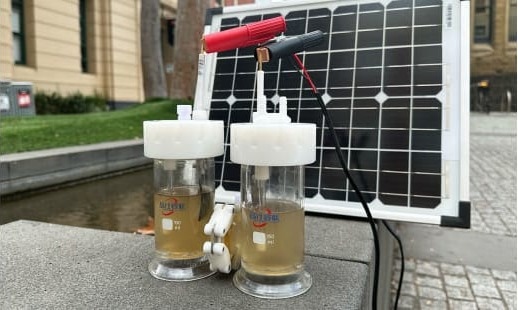Key Takeaways
- RMIT University has developed a novel method to produce green hydrogen using wastewater, transforming a waste liability into an energy resource.
- The approach utilizes contaminants in wastewater to enhance hydrogen production, employing specially designed electrodes made from agricultural waste.
- This innovation aims to reduce wastewater treatment costs while contributing to sustainability in water and energy sectors.
Transforming Wastewater into Green Hydrogen
Research from RMIT University has introduced an experimental technology that utilizes the high contaminant load of wastewater for the production of green hydrogen. Given that over 80% of global wastewater is discharged untreated, this research presents an innovative solution to repurpose waste into a valuable energy resource while addressing water scarcity issues worldwide.
The research team, collaborating with the University of Melbourne, Australian Synchrotron, and the University of New South Wales, discovered that specific heavy metals like platinum, chromium, and nickel found in wastewater can be captured and used to enhance hydrogen production. Lead researcher Associate Professor Nasir Mahmood stated that this approach does not require purified water, simplifying the process of generating green hydrogen.
The technological breakthrough involves the development of electrodes that play a vital role in splitting water into hydrogen and oxygen. These electrodes feature an absorbent carbon surface that attracts metals from wastewater, thus forming efficient and stable catalysts essential for the electrochemical reaction. This carbon is produced from agricultural waste, contributing to a circular economy.
During experiments, wastewater samples processed through a system with two electrodes—an anode and a cathode—were powered by renewable energy. The passing electricity facilitated a chemical reaction, leading to the separation of water into hydrogen and oxygen. The produced hydrogen can be collected for energy use, while the oxygen can be reintroduced into wastewater treatment systems to enhance efficiency by minimizing organic content.
The innovative method maintained continuous operation for 18 days with minimal performance decline, showcasing its potential effectiveness. As the project progresses, RMIT aims to develop a range of catalytic systems capable of utilizing challenging water resources like wastewater and seawater.
Co-lead researcher Professor Nicky Eshtiaghi explained that this method could significantly lower wastewater treatment costs while transforming a polluted resource into green hydrogen. The technology addresses both pollution control and water scarcity, positioning it as beneficial for both the energy and water sectors.
Looking ahead, RMIT researchers emphasize the need for partnerships with global companies and water authorities to advance this innovation into commercial systems. Co-researcher Dr. Muhammad Haris mentioned that additional research is necessary to refine the catalyst for improved efficiency and broader applicability across various wastewater types.
In summary, RMIT University’s experimental invention represents a promising frontier in sustainable energy production, showcasing the potential to transform wastewater challenges into opportunities for green hydrogen generation.
The content above is a summary. For more details, see the source article.















